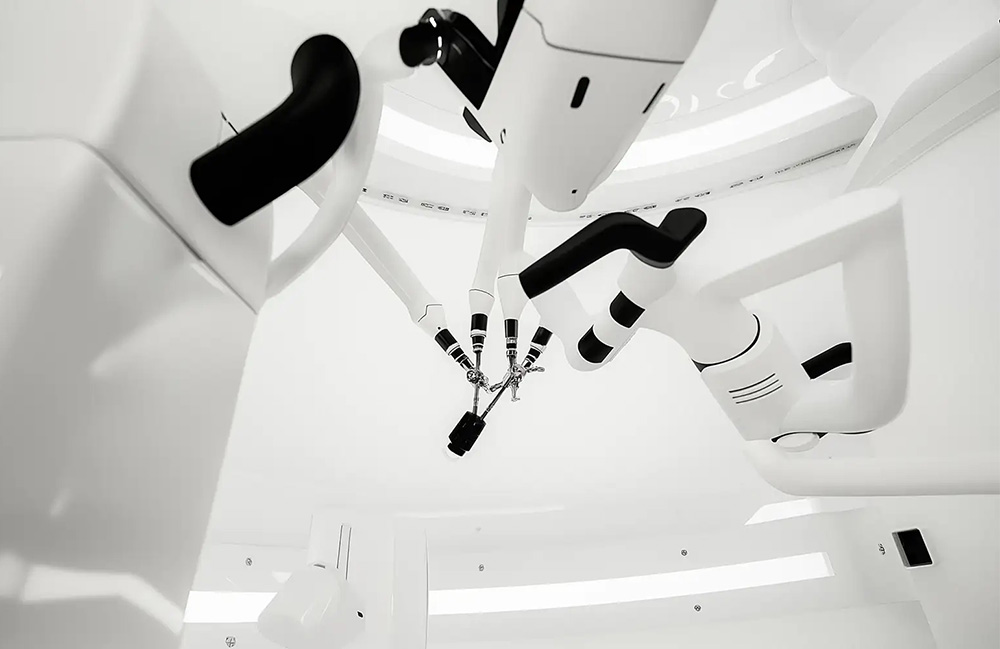
QNX OS 8.0 is a real-time operating system that processes interrupts in under 20 microseconds with minimal jitter. | Source: BlackBerry QNX
BlackBerry QNX, a developer of critical embedded systems for a wide range of industries, recently released its Age of the Robot study, which surveyed 1,000 global tech leaders on their trust in robotics in hospitals and operating rooms.
The study found that 77% of global technology leaders report trusting robotics to carry out essential functions in the workplace. It also indicated that 71% of organizations are either currently using robotics or have concrete plans for their integration in the near future.
Jim Hirsch, QNX’s vice president of the North American and EMEA general embedded market (GEM), shared further insights with The Robot Report into the current state of the surgical robotics market.
While QNX works in many industries, automotive being its strongest, Hirsch said medical devices is a strong market for the company. “We’re used in just about any and every medical device, all the way up through robotics,” he said. “It’s an interesting field, and we’ll continue to evolve our solution to support it.”
“Where we really shine is with functionally safe solutions,” Hirsch continued. “So, you can build a robot using a real-time operating system, but if you don’t meet certain standards, and it’s not functionally safe, what’s the point?”
QNX watches robotic telesurgery
In healthcare, robotic telesurgery has demonstrated recent advances. Just last month, a surgeon in Orlando, Fla., performed a telesurgery on a patient in Angola.
For these surgeries, any latency in the surgeon’s connection with the robot performing the surgery can have disastrous results. “When the doctor is moving his hands, sewing and cutting, it has to happen in real time when it’s commanded,” Hirsch said.
Hirsch did note that if the system went down or something did go wrong, there was a full surgical team ready in Angola to take over.
Fully autonomous surgeries are still years away, says Hirsch
“The big question is not necessarily about robotics, but about autonomous, AI-driven, or AI-incorporated systems,” Hirsch said. Robot-assisted surgery is already here, but there are still barriers for completely autonomous surgery, he added.

Jim Hirsch, the vice president of the North American and EMEA general embedded market at QNX. | Source: LinkedIn
Hirsch compared autonomous surgery to autonomous vehicles, which have long been a goal for the industry but are still a work in progress.
“Cars are becoming more autonomous,” he noted. “They are helping you stay within the lanes and with braking, but you have to be the driver. It’s really important to make sure you’re not crashing into something and hurting someone.”
Surgical procedures still need a human physician to be responsible for the robotic system, according to Hirsch. “It’ll eventually come, but autonomy, whether it’s automated cars or robots doing actual surgeries, it’s not going to happen near term. It’s going to take time,” he said.
While fully autonomous surgical systems aren’t here yet, QNX is still interested in bringing AI-focused companies into its ecosystem.
“The new players are coming into AI, and we’re looking into how to best incorporate those companies into our ecosystem,” Hirsch said. “And making sure that we’re part of theirs, so that we can easily operate together and customers can build faster and better solutions.”
How do we deploy more surgical robots in shorter timeframes?
A few things are still holding back the adoption of robotic surgical systems, Hirsch said. The first is cost.
“Think about MRI [magnetic resonance imaging] machines. There’s nothing advanced about an MRI compared to everything else that’s coming out now, but not everybody has one,” he said. Hospitals often get around this by referring patients to specialists. Hirsch says hospitals could do something similar for robotic systems.
“I think there may be ways that hospitals might work together and have joint surgical centers that could take advantage of these systems,” he said.
“Hospitals operate on a razor-thin margin. So, how do they deploy the best equipment and still turn a profit?” Hirsch continued. “So as more and more competitors enter the surgical robotics space, you’ll start to see prices come down.”
“Technology is bound to get better, faster, and smaller. It always does, right?” Hirsch added. “It’s a matter of adapting technologies and getting adoption from doctors, hospitals, the FDA, etc. That takes time.”
